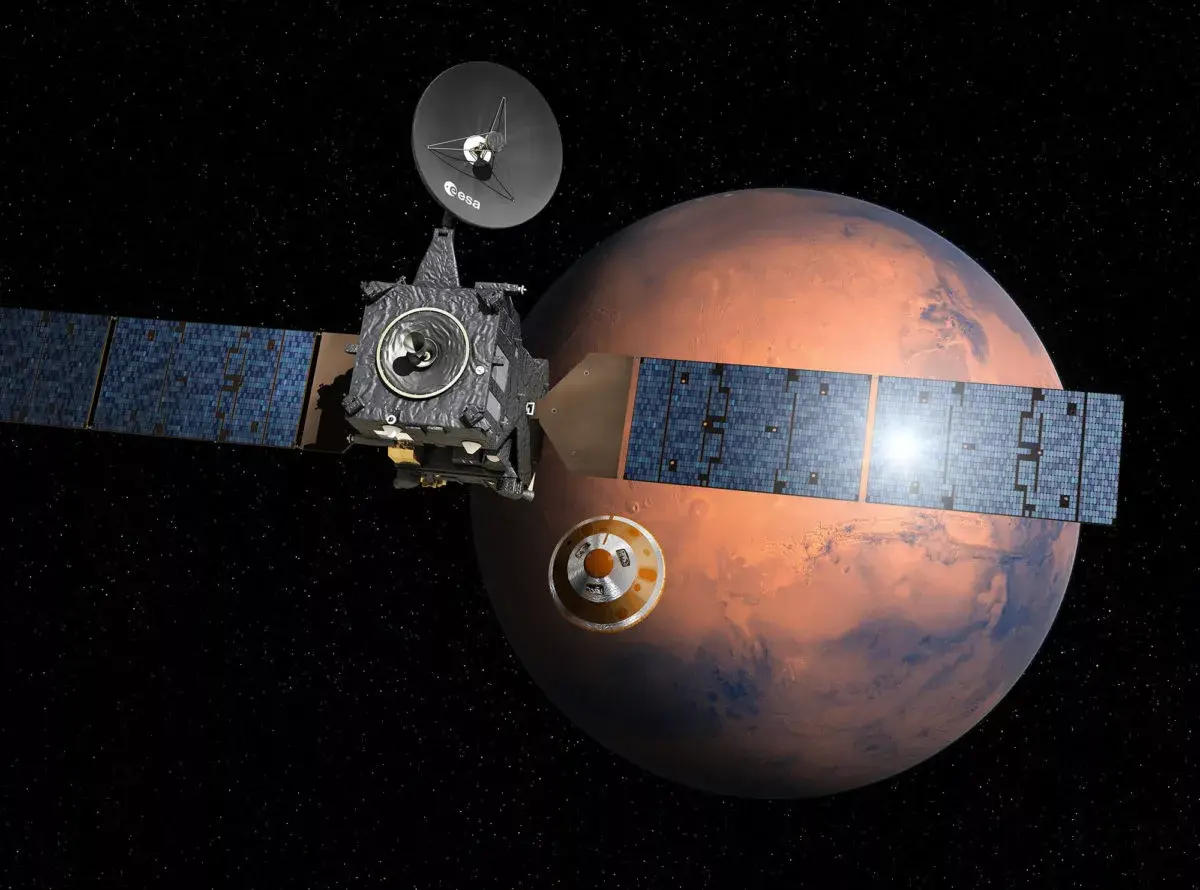A spacecraft snagged its first photo of an interstellar comet. See it now.

As a visitor from another solar system made its closest approach to Mars on Friday, two spacecraft in orbit around the Red Planet turned to look.
The European Space Agency’s ExoMars Trace Gas Orbiter and Mars Express took photos of the interstellar comet 3I/ATLAS as it passed within 19 million miles in space. That might seem extremely far, but astronomers say it’s a closeup on the cosmic scale.
Only one of them got lucky during the photo session.
What makes 3I/ATLAS special is that it didn’t come from the vast population of comets that circle the sun. It’s a true outsider, born around another star in the Milky Way and later flung out of its home system, maybe by a giant planet or star. After wandering for hundreds of millions of years, this icy traveler has finally entered our part of the galaxy.
And it won’t be sticking around for long. When NASA‘s Asteroid Terrestrial-impact Last Alert System telescope discovered the comet on July 1, the object was traveling 137,000 mph. Since then, astronomers have known it’s moving far too fast to get captured by the sun’s gravity, meaning it’s just passing through.
“This was a very challenging observation,” said Nick Thomas, who leads the ExoMars camera team, in a statement. “The comet is around 10,000 to 100,000 times fainter than our usual target.”
Credit: ESA / TGO / CaSSIS
Both European orbiters aimed their cameras at the comet, but only one succeeded. That’s because their instruments were built to take pictures of Mars’ bright surface at relatively close range, not to capture faint faraway specks.
While the ExoMars orbiter captured the tiny white splotch zipping by, Mars Express’ shorter exposure times posed more challenges in getting the shot. Researchers haven’t given up, though, and are working to extract the faint signal from those images.
This Tweet is currently unavailable. It might be loading or has been removed.
ExoMars’ pictures reveal the comet’s bright center surrounded by a glowing cloud of gas and dust called a coma. The orbiter couldn’t make out the comet’s nucleus. The tail also wasn’t visible, though scientists suspect it may brighten as 3I/ATLAS nears the sun and becomes more active.
Comets are frozen mixtures of rock, ice, and dust that come alive when sunlight heats them, releasing glowing gas and debris that form their trademark tails. The native ones are believed to be leftover ingredients from the solar system’s formation 4.6 billion years ago. Astronomers have catalogued more than 4,000 so far, though countless others likely skulk far beyond Neptune, either in the Kuiper Belt or the Oort Cloud, a vast shell of icy remnants about 50 times farther from the sun.
Earlier observations revealed that 3I/ATLAS contains dust much like that found in local comets, hinting that the basic recipe for making planets may be similar around other stars.
Credit: ESA infographic
This is only the third confirmed interstellar comet. The first, the elongated and exotic ‘Oumuamua, zipped through the solar system in 2017. Two years later came 2I/Borisov, which looked and behaved more like a regular comet.
Recent research suggests 3I/ATLAS may have been born in an older region of the galaxy populated by much older stars. If so, the comet itself could be more than 7 billion years old — almost twice the age of this solar system.
Despite its breakneck speed, 3I/ATLAS poses no danger to Earth. The closest it will come is about 170 million miles away — and on the other side of the sun.
Then, after the comet emerges from the glare next month, ESA’s Jupiter Icy Moons Explorer spacecraft — aka Juice — will try to see the comet as well. Researchers are hopeful that it will deliver detailed images and data since the comet will be at its most active, glowing with a bright halo and enormous tail.
Mashable






